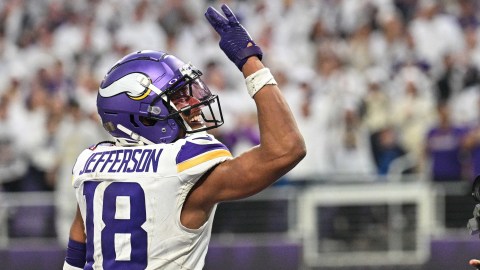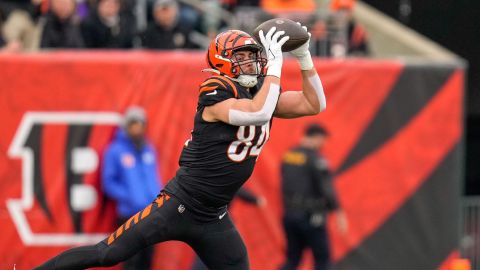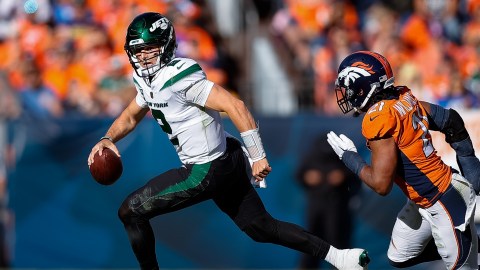The NFL’s offseason got under way this week with the combine, the opening of the franchise tag window and the first decent contract (Stanford Routt). After last year’s lockout, the quick turnaround is a welcomed site in the NFL world, and the league can get back to normalcy.
Let’s dive into the Two-Minute Drill, which has no offseason.
1. I’ll begin my run of 10 mock drafts Thursday on NESN.com, and we’ll post one per week until the start of the draft April 26. It’s crazy to think the Super Bowl was just two weeks ago, and the draft is only nine weeks away. The Patriots can begin their team-orchestrated workouts in mid-April, so this offseason will fly by for New Englanders.
2. For me, the mock drafts are a great way to analyze each draft class, which is very difficult to do during the NFL season. They also give me the chance to look into each team’s needs as they build toward the next season. Hopefully, that comes across for the readers, too.
3. Mock drafts aren’t much more than a glorified guessing game, obviously, but anything done before the combine — which also begins this week in Indianapolis — is a true shot in the dark. While some of the track-and-field tests are fairly useless, they do provide a glimpse into each player’s workout regimen and dedication to training. Surely, scouting departments want to see elite athleticism, but more than anything, they don’t want anyone to show up fat and out of shape.
4. The interview process is the most important part for each player, but it’s not the be-all, end-all. Teams are given a very restrictive block of time to meet with each prospect, and the truly vital, extensive interviews will take place in the next two months at team facilities and on campuses. Similar to not showing up fat and running a slow 40-yard dash, draft prospects just need to make sure they don’t fail a drug test, skip an interview or fall asleep at this thing.
5. Stanford quarterback Andrew Luck reportedly won’t throw at the combine due to the request of teams that want him to wait until his pro day, but he’ll apparently do everything else. There’s nothing wrong with that. After a sterling collegiate career, Luck has very little to gain by throwing in Indy.
6. However, it’s important for Luck to be in attendance, and it’s a good marketing move for him to show up, particularly since it’s in the city where it’s presumed he’ll spend the start of his NFL career. By reporting to the combine, Luck doesn’t give off the vibe that he’s in a different class than everyone else — even though he is — and he can get a jump start on sponsorship deals. Hey, there’s nothing wrong with getting paid as early as possible.
7. I loved watching South Carolina wide receiver Alshon Jeffery, and after the college season, I thought he could contend with Oklahoma State’s Justin Blackmon for the top receiver off the board. But if you Google, “Alshon Jeffery,” the first thing that shows up in the auto-complete field is, “fat.” So, that’s not great. This week will be very important for his draft stock. He’s still got a top-15 ceiling, but he could really bottom out with a poor run of predraft workouts.
8. I think Alabama safety Mark Barron would be an ideal fit for the Patriots, but they’d need to move up to take him. He could go as early as No. 6 to Washington, and even if that’s too high, there are 14 teams picking between Nos. 7-26 that could use an upgrade at safety. Since Barron currently looks like the only safety with first-round potential, the Patriots can probably give up on him.
9. Patriots backup quarterback Brian Hoyer will continue to receive a lot of attention this offseason because he’s good enough to have earned a chance to start elsewhere. He’s a restricted free agent, and I’m not ruling out a sign-and-trade just yet, but if I had to guess, I’d say he’ll return to New England for one more season.
10. One other thing: His value could increase in August if a quarterback goes down in another team’s camp. Right now, before the draft, I think the Patriots would be lucky to get a second-round pick if they traded Hoyer. But if the demand goes up due to injury — and that’s inevitable, really — the Patriots could capitalize.
11. That’s not the only scenario, either. If both Hoyer and Ryan Mallett play well in the preseason and a team like the Cardinals decides to give up on Kevin Kolb, Hoyer would be on the very short list of candidates as a replacement.
12. The reason why Hoyer’s stock might not be as high now is because this is the season when scouting departments fall in love with quarterbacks. Why trade a second- or third-round pick for a backup when you could use that pick to develop your own rookie and market him as the main guy to your fan base?
13. Then again, teams will face a dilemma. Last year, it looked like quarterbacks Jake Locker, Christian Ponder, Andy Dalton and Colin Kaepernick were second-round candidates with late-first-round potential. Locker (No. 8) and Ponder (No. 12) were taken surprisingly early by aggressive teams, but Dalton and Kaepernick stuck in the second round. Will that trend continue this year?
14. If so, there could be a wide range of draft potential for quarterbacks like Texas A&M’s Ryan Tannehill (gaining heavy first-round momentum), Arizona State’s Brock Osweiler, Oklahoma State’s Brandon Weeden, Michigan State’s Kirk Cousins, Arizona’s Nick Foles, Wisconsin’s Russell Wilson and Boise State’s Kellen Moore. As of right now, all of those players could do enough to work their way into the second or third round. Maybe they’ll wind up as career-long backups, but like I said earlier, this is when scouting departments fall in love with certain players for one reason or another.
15. With two picks in each of the first three rounds, the Patriots will have a chance to trade up if they want, but that’s tougher than it was in the past due to the new rookie salary structure (implemented in 2011), which makes it easier on teams at the top of the first round to swing for a home run on a pick. It will still hurt their rebuilding process if they miss in the top-10 or top-15, but it won’t crush them financially like it has in the past 10-15 years.
16. The Patriots have pick Nos. 27 and 31, so look at this as a barometer. Last year, the Falcons moved from No. 27 to No. 6 by sending five picks to the Browns — their first-rounder, second-rounder (No. 59), fourth-rounder (No. 124), and their first- and fourth-round picks in 2012. The Browns got a significant haul there, and I’m not saying the Patriots would have to equal that load to get as high as No. 6.
17. But if they’re looking to get into the top-10, it will likely require two first-round picks (either both of this year’s or a split between this year and next) and a second-rounder, if not another lower-round pick on top of it all. Obviously, I don’t think many people would expect Belichick to make such an aggressive trade in the first place, but if he’s looking to trade up in the first round, he might not get a lot higher than the late-teens.
18. One more comparison: The Browns traded the 27th pick and a third-rounder (No. 70) to the Chiefs’ 21st pick. Even that’s a pretty steep price for just six selections.
19. Basically, what I think all of this means is Jimmy Johnson‘s draft pick trade value chart could be completely outdated with the new rookie salary scale. The chart wasn’t a rule in the NFL, but head coaches, including Belichick, have noted its use as a resource in the past.
20. I don’t think it was much of a revelation that Steelers wide receiver Mike Wallace would hit free agency, which was reported Tuesday. Wallace is still a restricted free agent, and if the Steelers don’t offer him a tender (to get a draft pick if another team signs him), it’d be a deplorable business decision. All this means is they won’t franchise him, which they couldn’t have done anyway due to their massive issue with the salary cap. But anyway, if the Patriots want him, they’d still likely have to fork over a first-round pick to get him. If they were planning to use a first-rounder on a receiver anyway, it might not be such a stiff investment to go after something of a more proven commodity.
Bonus nugget of the day: Wallace’s first name is Burnell, and he is officially listed as Burnell Wallace in the NFLPA’s database.
Have a question for Jeff Howe? Send it to him via Twitter at @jeffphowe or send it here. He will pick a few questions to answer every week for his mailbag.



